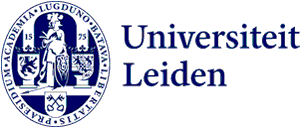
‘All of Leiden will join in with the Seeing Stars experiment’
What will happen if the lights in a large part of the city are switched off? How many stars can you see without all that light pollution? This is what researchers, artists and the residents of Leiden are going to investigate during Seeing Stars Leiden on 25 September. ‘Leiden is the ideal place for this experiment,’ says astronomer Frans Snik.
Seeing Stars is a project by artist Daan Roosegaarde and UNESCO World Heritage. Snik has worked with Rosegaarde before (in Dutch). ‘He’s known as a light artist but the light he uses in his projects has become increasingly subtle in recent years. Now he mainly wants to remove light so we can see the stars again.’
The Seeing Stars concept was trialled in the Frisian town of Franeker last year. ‘It’s a fairly small town with little light pollution around it, which made it a suitable place for a pilot.’ A beautiful night sky could be seen, thanks to the cooperation of the mayor and the residents of the small city. ‘When you look at the photos, they almost look photoshopped. You normally only see stars like that around the Wadden Sea.’

The reactions to Seeing Stars were overwhelming, says Snik. ‘Various world cities are now interested in the project, but Leiden is first in line. In many ways Leiden is the ideal place this year to try this out for the first time on a large scale. It’s neither too small nor too big. The Municipality of Leiden wants to lead the way with this concept and soon agreed. And we’re European City of Science this year. What was lacking was a big event that brings together science, art and the people of the city.’
Preparations for the experiment are in full swing. ‘It’s been adopted by all of Leiden.’ The organisation is still a big challenge, says Snik. ‘The municipality is working hard with everyone involved to ensure that the streetlights can be switched off. And that will only really work if people switch off their own lights too.’

Almost all of the lights in Leiden will be turned off. The bigger is 'dark zone' is, the better, says Snik. One problem with organising the event is that the date is not 100 per cent certain. ‘We want to do it on 25 September, which is convenient for various reasons, but we’ll postpone it if it’s cloudy.’
Citizen science
The experiment should be a textbook example of citizen science. ‘Everyone can participate in gathering scientific knowledge. We are all going to turn off the lights. How many stars will we actually see? How will the people of Leiden react to this unique situation? And how much less light pollution and energy wastage will we cause? This is primarily a social and scientific experiment on behalf of all of Leiden.’
Anyone who wants to take part can count stars using an app. ‘We’re also testing a new way of measuring light pollution directly with smartphones. Then we’ll have the first scientific publication on how dark it can get when we turn off all the lights.’
People can submit research questions via Postbus 71. These don’t have to relate to astronomy, Snik emphasises. ‘Biologists from the Institute of Environmental Sciences (CML) and Naturalis are researching the influence of light pollution on nature, for example on the mating behaviour of various animals. There is also the large NWA BioClock project, about how light pollution disrupts your biological clock. But we also want to make the link beyond the natural sciences: How much light do we really need to feel safe, to find our bearings and for insurance? And we also want to collaborate with the humanities and the arts: How can we express ourselves culturally if the sense of sight becomes much less important?’
‘To gain insight, we need the rest of society.’
Snik has more than a decade of experience with citizen science through his role at the Citizen Science Lab. ‘If we want to tackle major societal problems, such as energy wastage and the loss of biodiversity, then we as researchers can’t do it alone. To gain insight, we need the rest of society. We are trying to do broader science, not just within the walls of the university, but in collaboration with the rest of the city and society.’

Snik hopes that Seeing Stars will draw more attention to what he calls, ‘the right to see the stars and planets’. ‘What is more important: that the lights are on all night or that our children can look at the stars from their own backyard? Many children in the city will never have consciously looked at the night sky. That’s a downright shame. I bet children, and other residents too, will freak out as soon as the lights go out. It’ll be a magic moment.’
Text: Tom Janssen
Banner photo: Studio Roosegaarde
